
Doing international business?
Then most likely, by definition – you will be doing cross-border payments without even knowing it!
Today we have worked hard to bring you a comprehensive list of payment service providers to suit your needs.
Let’s dive in.
Definition of Cross-Border Payments
The Internet has helped global trade grow rapidly over the years; hence, most financial institutions and payment providers have developed to ease cross-border payments. A cross-border payment is a transaction involving money transferred from one country to another. Cross-border payment works through financial institutions that are typically linked to send/receive money. Today, there are numerous websites that provide easier cross-border payment options. Technically, this is one of the best innovations of the Internet because it’s a convenient and low-cost tool to cover people’s important payment needs.
Advantages of Cross-Border Payment Providers
Minimizes overseas transfer fees
Most transactions made overseas (including money transfers) include whopping fees. Wire transfers overseas through a bank most often incur fees for both the sender and the recipient. Not only does it take longer, but it also costs more because it involves more parties – your local bank, foreign bank, and the wire processing systems of both banks. Using a cross-border payment provider is usually significantly cheaper, if not free.
Locked-in exchange rate
Most of the cross-border payment providers today offer Locked-in Rates. With locked-In exchange rates, the value of a certain country’s currency is fixed against the value of another country’s currency. Basically, this is to guarantee the stability of an exchange rate and avoid dramatic currency fluctuations.
Broader global reach
Moving funds has been made easier, hence providing a broader payment reach to/from hundreds of countries.
Faster & simpler payment channel
The process only takes minutes to execute, and a few days to complete.
Convenience of access
Allows people to move funds wherever and whenever using only a device that is connected to the Internet.
Better exchange rate
The exchange rate we usually see on the news is typically set by the banks themselves to make money off you. With today’s cross-border payment providers, they give you the real exchange rate or the mid-market rate.
Cross-Border Payment Providers (in no particular order)
Ready to dive into the growing list of banking solutions and service providers for your business needs? Enjoy the below, let us know who you decide.
OFX
 Ofx.com is headquartered in Sydney, Australia, and was founded in 1998. Their goal: to give people a fair go and to cater international money transfer business in which honesty, certainty and value really matter
Ofx.com is headquartered in Sydney, Australia, and was founded in 1998. Their goal: to give people a fair go and to cater international money transfer business in which honesty, certainty and value really matter
OFX is one of the largest money transfer companies in the world. In fact, it has very competitive rates. What I like about OFX is that it has an online platform & mobile app that is simple and easy to navigate, it provides good customer service & has several flexible ways to transfer your funds internationally including:
Payoneer
 Founded in 2005 and based in New York, Payoneer is venture-backed, profitable and ranked in the top 100 of Inc. 5000’s Financial Services companies. With over 700 employees globally across 12 offices, Payoneer is dedicated to overcoming the complexities associated with cross-border payments. In today’s borderless digital world, Payoneer enables millions of businesses and professionals from more than 200 countries, to grow globally by facilitating seamless, cross-border payments.
Founded in 2005 and based in New York, Payoneer is venture-backed, profitable and ranked in the top 100 of Inc. 5000’s Financial Services companies. With over 700 employees globally across 12 offices, Payoneer is dedicated to overcoming the complexities associated with cross-border payments. In today’s borderless digital world, Payoneer enables millions of businesses and professionals from more than 200 countries, to grow globally by facilitating seamless, cross-border payments.
Payoneer offers Global Payment, Payoneer Mass Payout Services, Escrow Payment, Integrated payments API and Billing Service. Payoneer is best for online shoppers, freelancers and businesses. The good thing about Payoneer is that it has over 3million users, and is partnered with huge companies like Google, Amazon, Airbnb and Odesk. Payoneer is basically like an alternative to Paypal – but Payoneer is just less complicated and cheaper. However, as per user ratings from multiple websites, Payoneer seems to lack customer support and some users have experienced several issues with bank transfers.
Special Bonus from Payoneer For GFA Readers
We have worked out a special deal for new Payoneer users – Receive a $100 USD bonus (rebate) when you load your first $1,000 USD
World First
 Worldfirst was founded way back April 2004 and is based in London. World First facilitates businesses and individuals to conduct customer service and money transfer activities. Catering to clientele in the hedge fund and exporting sectors, the company helps businesses open up receiving accounts to get payments in their local currency and set up forward contracts to lock in a rate to make late transfers. The company also enables online sellers to manage their payments across multiple international marketplaces and make payments to overseas suppliers.
Worldfirst was founded way back April 2004 and is based in London. World First facilitates businesses and individuals to conduct customer service and money transfer activities. Catering to clientele in the hedge fund and exporting sectors, the company helps businesses open up receiving accounts to get payments in their local currency and set up forward contracts to lock in a rate to make late transfers. The company also enables online sellers to manage their payments across multiple international marketplaces and make payments to overseas suppliers.
Worldfirst is one of the most common cross border payment providers in the UK. It has nearly 120,000 users and perfect for online sellers. If you’re a seller who aims to do business with China, Worldfirst could be your perfect partner, as they help you open a CNY receiving account. Also, just like OFX, it also offers a lock-in rate tool for up to 3 years.
Aurelia Pay
 Banks could charge you up to 8% in hidden costs when sending money abroad. Aurelia Pay is up to 8x cheaper compared to conventional way of money transfer. Fair and transparent.
Banks could charge you up to 8% in hidden costs when sending money abroad. Aurelia Pay is up to 8x cheaper compared to conventional way of money transfer. Fair and transparent.
Aureliapay is basically a new kid on the block of cross border payment provider worth checking out!
Aurelia Pay I use for making payments from Hong Kong to Philippines, Mainland China, and other countries in Southeast Asia. Fast, same day, and much lower fees than a normal bank wire, just some of the FX (foreign exchange) spread. They were on the GFA podcast here. I like that I can may a Hong Kong bank to their Hong Kong bank transfer to keep my fees and processing time down.
Currencies Direct
 Currenciesdirect was founded in 1996. It provides foreign exchange payment services to corporate and personal clients. The company’s products include spot contracts, forward contracts, regular transfers, limit orders, rate watches, stop loss orders and multiple payments.
Currenciesdirect was founded in 1996. It provides foreign exchange payment services to corporate and personal clients. The company’s products include spot contracts, forward contracts, regular transfers, limit orders, rate watches, stop loss orders and multiple payments.
Currencies Direct almost have the same offers as OFX and Worldfirst (spot contract, forward contract, regular transfers, limit orders, multiple payments) But the best thing about CurrenciesDirect is that it offers a strict no transfer fees policy and has a small minimum transfer amount ($100) However, with the tight competition among cross border payment providers, CurrenciesDirect is pretty much secretive with their rates. Thing is, you cannot simply obtain information/get a quote without registering, the response do not take long but who wouldn’t want instant answers, right?
Money Corp
 Moneycorp has been a market leader in the fast-moving world of foreign exchange for more than 35 years – this credibility has attracted a number of prestigious brands, such as Virgin Atlantic, CNN, The Telegraph and the Daily Mail, to work with them as their trusted partner.
Moneycorp has been a market leader in the fast-moving world of foreign exchange for more than 35 years – this credibility has attracted a number of prestigious brands, such as Virgin Atlantic, CNN, The Telegraph and the Daily Mail, to work with them as their trusted partner.
Moneycorp was established in the year 1962 and maintains a good reputation in international money transfer service. Just like the 3 companies above, Moneycorp also offers multiple ways to transfer funds: one-off payments, regular, forward contract, market orders, and global payment solutions. The employees are veterans and professionals who can help you with all forms of money transfers. I guess the only drawback I’ve noticed is the long registration process.
World Remit
 WorldRemit is the online money transfer service, making it easy for people to send money to family and friends in more than 120 countries via bank account, cash pickup, Mobile Money and Airtime top-up.
WorldRemit is the online money transfer service, making it easy for people to send money to family and friends in more than 120 countries via bank account, cash pickup, Mobile Money and Airtime top-up.
Worldremit is basically similar to Western Union, and is perfect for overseas workers who need to send money abroad. It works using their mobile app, which has nice and simple interface, by the way. There are four ways to send your money: thru a bank deposit, cash pick up, mobile money and airtime pop-up. Basically, to send money, you only need to sign up, choose the country you need to send the money to, choose how you want to send the money, choose how much you want to send (all information like the fees and exchange rates will be shown in this stage), enter your recipient’s details and then pay using your debit/credit card or thru a bank account payment services. What I like about Worldremit is that works so simple yet fast, and it’s self-explanatory.
Transfer Go
 TransferGo is an international cheap money transfer company for migrant workers who want to send money back to their families without paying excessive bank fees. It was founded in 2012 and has offices in Lithuania and London, UK. Using the innovative system of TransferGo, migrants can transfer money abroad using a digital account-to-account business model, which means that money does not have to leave the country as funds are paid in and out locally.
TransferGo is an international cheap money transfer company for migrant workers who want to send money back to their families without paying excessive bank fees. It was founded in 2012 and has offices in Lithuania and London, UK. Using the innovative system of TransferGo, migrants can transfer money abroad using a digital account-to-account business model, which means that money does not have to leave the country as funds are paid in and out locally.
This is yet another payment provider similar to Western Union. Also perfect for migrant workers to avoid whopping bank transfer fees. What I like about TransferGo is that it guarantees standard transfers to arrive on the next business day. Their mobile app and desktop interface are easy to navigate, speedy and convenient. Basically, TransferGo works as an intermediary between your local and foreign bank.
I guess the only drawbacks are: you can only send money to a bank account and the verification process takes a bit long wherein you’ll need to present a valid ID, proof of address and proof of funds.
Transfer Wise
 TransferWise is one of the biggest fintech start-ups[2] launched in January 2011 by Kristo Käärmann and Taavet Hinrikus. It is headquartered in London and has nine offices around the world, including New York, Sydney, Singapore, Tokyo and Tallinn, Estonia.
TransferWise is one of the biggest fintech start-ups[2] launched in January 2011 by Kristo Käärmann and Taavet Hinrikus. It is headquartered in London and has nine offices around the world, including New York, Sydney, Singapore, Tokyo and Tallinn, Estonia.
Transferwise says they are 8x cheaper from Banks. Transferwise is perfect for businesses and freelancers who want to avoid expensive international transfer fees. They are pretty much transparent with the fees and offers mid-market exchange rates. I like how bold they are on emphasizing how banks make money off you thru cross border payment and their belief that money is meant to flow freely. This belief is what drives them to allow people send money internationally at the lowest possible cost. Just like the above websites, Transferwise also offers Lock-In exchange rate feature and automated repeat-transfers.
Global Reach Partners
 Established in 2002, Global Reach Partners focuses on providing the very best foreign exchange service to businesses across the UK. With access to over 130 major and local market currencies and a range of products, they help clients to achieve a streamlined approach to international trading, treasury and risk management.
Established in 2002, Global Reach Partners focuses on providing the very best foreign exchange service to businesses across the UK. With access to over 130 major and local market currencies and a range of products, they help clients to achieve a streamlined approach to international trading, treasury and risk management.
Globalreach-partners is one of the top 10 largest cross border payment providers in the UK and has been in the industry for about 15 years. Basically, it has the same features as the majority of other international money transfer reviewed above, it offers: spot forex, market orders, forward contracts and mid market exchange rates. The only drawback i noticed is the account opening process which requires too many documents.
Currenxie
 Currenxie was founded in 2014 to help the business community eliminate barriers to trade by offering efficient FX and cross-border payment solutions. We focus on technology, innovation and client service.
Currenxie was founded in 2014 to help the business community eliminate barriers to trade by offering efficient FX and cross-border payment solutions. We focus on technology, innovation and client service.
Currenxie – new solution for cross border payments for your Amazon marketplace. Specializing in more unique Amazon Marketplaces, in Europe, Japan, Korea, I know the team in Hong Kong and they are excelling in personalized support and customer service.
Send Wyre (Remitsy)
 The fastest, most cost effective way to do international money transfer. Leveraging technology to bring the best speed and pricing to your payments. No strings attached.
The fastest, most cost effective way to do international money transfer. Leveraging technology to bring the best speed and pricing to your payments. No strings attached.
Send Wyre (Remitsy) – I have followed along the development of Remitsy (We had them on the podcast here, and a how to guide here) which has merged with Send Wyre. A cross border payments platform specializing in helping companies get their payments from Amazon marketplaces, they have operations inside and outside of Mainland China so they understand your true cross border payment needs.
Xoom (a Paypal Company)
 The easiest way to send money, reload phones, and pay bills around the world. Send up to $10,000 USD in one transaction.
The easiest way to send money, reload phones, and pay bills around the world. Send up to $10,000 USD in one transaction.
Xoom (we covered in our Paypal China guide) is a way to send smaller money transfers between people around the world. It used to be independently owned but has recently been acquired by Paypal.
Comparison
Cross Border Payment with China
China is one the world’s fastest growing economy – therefore most companies around the world like to do business with them. However, doing business with China can be challenging because of the country’s complex regulations. Moving funds in and out of China is difficult. The thing with Chinese Yuan is that is strictly regulated and limited in how it can be used. The use of international credit cards isn’t even ideal in making transactions abroad due to certain factors in government regulations over the payment industry.
Nevertheless, over the years, China has changed and joined the global financial community. In March 2016, a Memorandum of Understanding was signed by SWIFT with the China Cross-border Interbank Payment System (CIPS) Co to develop China’s cross-border payments infrastructure (source). This memorandum basically aims to internationalize the RMB and have a system to ease global trade and foreign exchange.
So, if you plan to do business with China, there are alternative channels to execute international payment. One is thru Alipay or Wechat – these two are the most widely used tool in China’s Ecommerce. One advantage of using Alipay/Wechat is that you only need a phone or tablet device that is connected to the Internet to carry out an international transaction.
You may also want to try some 3rd party cross border payment providers like Geoswift & Worldfirst –they basically specialize on payment solutions that connect China to the world. These newer, faster, digital payment providers opens up a global access that links consumers and merchants not only conduct online transactions faster but also complete the online purchasing experience more efficiently.
What is CIPS?
CIPS stands for Cross-Border Interbank Payment System, or sometimes referred to as the China Interbank Payment System. To simply put, it is an interbank payment and settlement system, what it does is connect or enables financial institutions worldwide to send and receive information about financial transactions such as payment orders. Payment orders basically refer to an instruction to a bank made by an account holder to make payments to a third-party. The main purpose of CIPS is basically to maximize the use of renminbi globally with less cost and less processing time.
Main Objective of China Interbank Payment System
1. To provide a secure and easy payment and settlement service for financial institutions doing RMB cross border transactions
2. To streamline the process of cross-border RMB clearing among onshore & offshore participants
3. To support both Chinese and English language
4. To be available 23 hours a day and support non-Asian time zones.
5. To provide more automated conversion processing system.
6. To cater financing and individual fund transfers.
7. To revamp routing of payment flows
How CIPS differentiate from SWIFT?
“SWIFT is a global messaging provider supporting more than 150 payment and settlement systems, and CIPS is a payment system. There are natural synergies between global financial messaging services, such those provided by SWIFT, and payment systems. Working with such market infrastructures is at the heart of our business”.
– Alain Raes – SWIFT Chief Executive of Asia Pacific and EMEA
Will CIPS be the new “payment superhighway”?
CIPS was launched March 2015 with high hopes and expectations. 2 years after and Chinese regulators are still on the process of developing the best platform to carry out these objectives. What we only know is that it aims to be the payment superhighway and maybe a SWIFT alternative, but how and when? That, we are yet to know in the coming months. For now, CIPS is currently running on a trial basis among selected banks – no official statement has been released when it will be fully-launched.
What changes can CIPS bring?
CIPS’ apparent purpose is to maximize and internationalize the use of RMB currency, hence challenging the dominance of the US Dollar in the world finance. What happens when USD is no longer the dominant currency? Obviously, the US dollar will devalue and might lead to major crisis especially to Americans. But let’s not jump into that conclusion just yet, CIPS do not aim to cause trouble such as that. Moreover, the strength and primacy of US dollar still reigns supreme, and it will be loooong and slow process for RMB to take over currency dominancy.
Question From a Reader
We received quite an extensive and in-depth question from a GFA reader worth sharing:
Cross Border PaymentsHi Michael,
Saw an article from you on Global from Asia regarding cross border payments https://www.globalfromasia.com/cross-border-payments/, and thought I’d reach out and connect with you.First off, thank you for sharing your insights on the growing and ever changing cross border payment provider!
Secondly, I wanted to introduce myself and see if we can share knowledge on a dilemma I currently have.
I am heading up a cross border eCommerce business from Vietnam. We focus on social eCommerce platform and e-tailing. We are looking for viable solutions for cross border payments that:
1) reduce costs for us and our partners
2) reduce wait time
3) flexible for growth
We are currently paying partners and collaborators in China, Vietnam, Singapore, and the USA. And I have developed “an ideal” payment flow model I want to have.
However, I am quit puzzled with the best provider to go with for both payment process, and payouts. We currently work with PayPal, Stripe, exploring relationships with PO and BlueSnap.Wondering if you, or anyone in your network, who is an expert at legally moving money cross border, could help me out?
We have legal entities in VN, Singapore and the USA that we can base operations out of.
Thanks for reading this long message, and hope to hear from you soon!
Cheers,Calvin
Answer:
So happy you enjoy this article and it has helped you.
Our go to person for cross-border payments is Simon Lim, the CEO and co-founder of Goremit. Having the licenses and experiences setting up his business in Hong Kong as a MSO (money service operator) he is the person I have often consulted with for money exchange issues in Mainland China and Southeast Asia.
Who Do You Use For Cross Border Wires?
As you can see, we have quite a few options! There are differences in services if you are using them for Amazon FBA payments or freelancer payments, so choose carefully.
Let’s also help each other out and share in the comment section below our positive and negative experiences. The cream rises to the top!
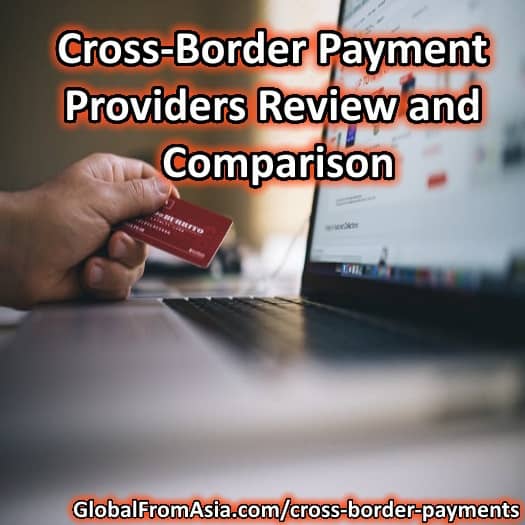
Also – check out Global From Asia Reviews for more options and alternatives – we add as many as we can on a regular basis!














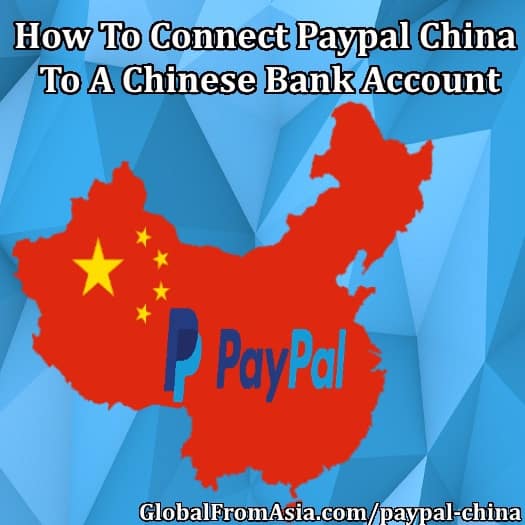

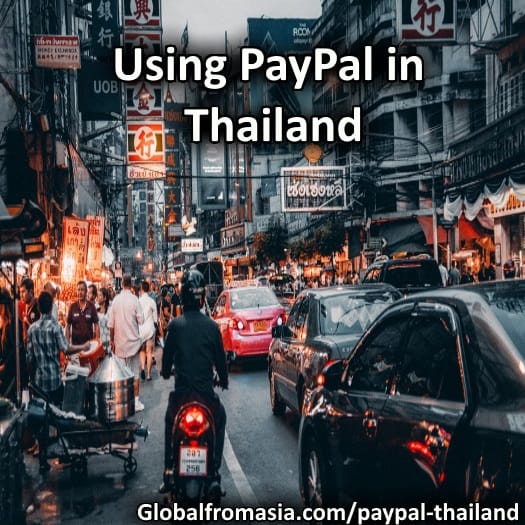

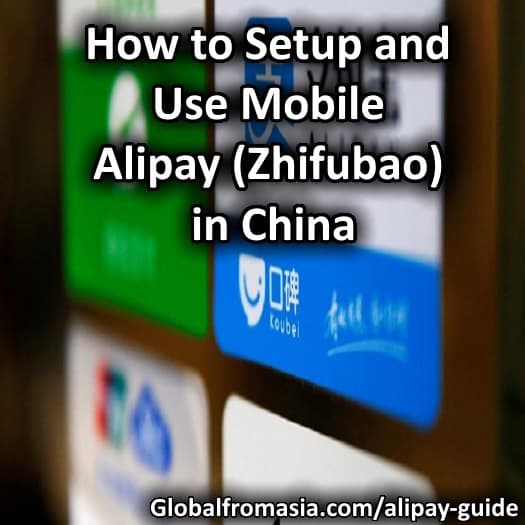
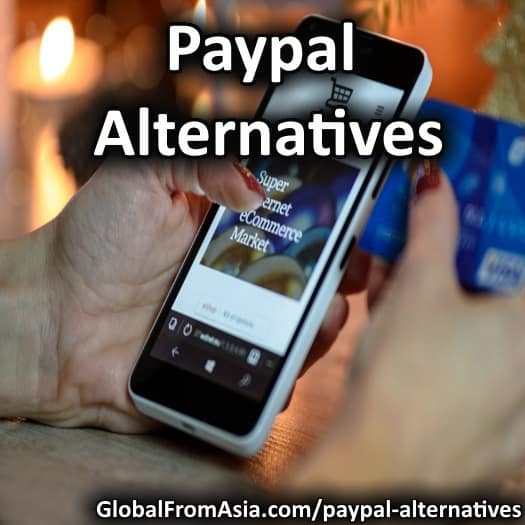
6 Comments on “Cross-Border Payment Providers Review and Comparison”
Pingback: Newsletter: 82 App Developer in Asia
Pingback: Applying To Hong Kong Banks? Results After Visiting 20 in 2 days (As an American Entrepreneur)
Pingback: How To Connect Paypal China To A Chinese Bank Account
Pingback: Chinese New Year Bonus, How Much to Give?
Pingback: A Solution for the Hong Kong Banking Nightmare? Introducing Neat - Online HK Business Banking & Connect Your Paypal/Stripe - Global From Asia
Pingback: Neat HK: A Solution for the Hong Kong Banking Nightmare? Reviewing Neat – Online HK Business Banking & Connect Your Paypal/Stripe - Product Reviews